HOME > Exhibitions > Past
-
Special Exhibition Commemorating the 80th Anniversary of the Founding of the Nezu Museum
National Treasures and Important Cultural Properties in the Nezu Collection
- Saturday, November 14 - Sunday, December 20, 2020
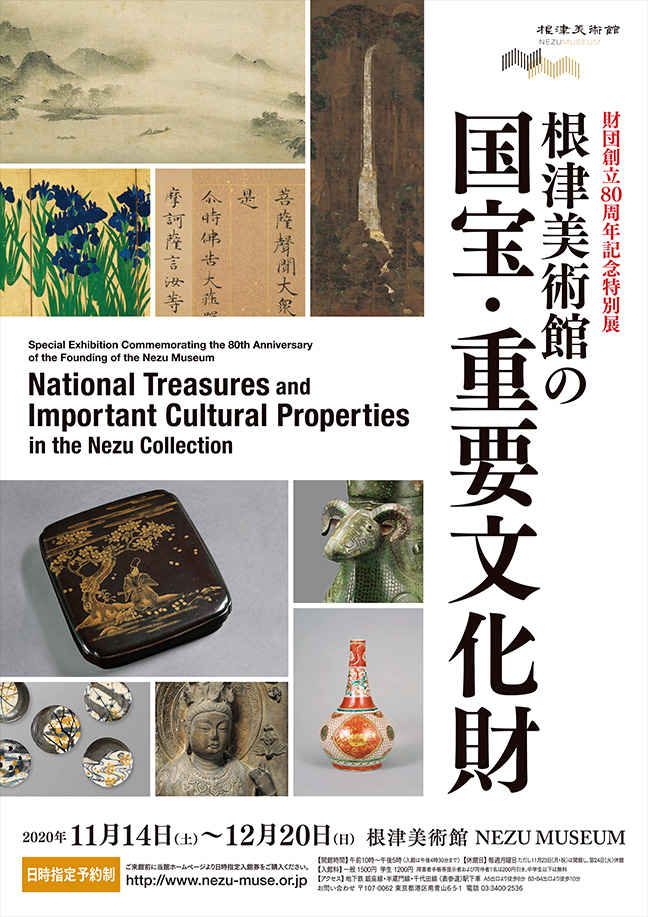

| Closed | Mondays |
|---|---|
| Hours | 10 a.m. - 5 p.m.(last entry: 4:30 p.m.) |
| General admission | Adult 1500 yen, Student 1200 yen |
| Gallery | 1/2/3/4/5/6/Hall |
This year is the 80th anniversary of both the establishment of the Nezu Museum Foundation and the death of Nezu Kaichirō, Sr. In commemoration, this exhibition brings together treasures of East Asian arts and crafts that are the pride of the Nezu Museum.
Please see below for some of the exhibits on view. Click here to see the list of all exhibits.
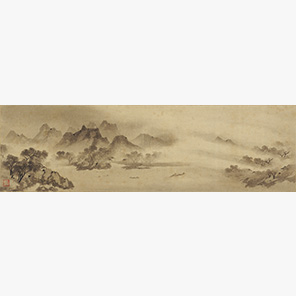


- Fishing Village at Sunset By Muqi
-
China Southern Song dynasty, 13th century
Nezu Museum -
In this scene of a fishing village as the day comes to an end, Muqi makes effective use of monochrome ink painting techniques. A prized possession of the Ashikaga shoguns, it bears the collector’s seal of the third shogun Ashikaga Yoshimitsu (1358-1408), who had the scroll divided into separate hanging scrolls for the purpose of adorning the rooms of his residences.
On Exhibit: Nov.14th-29th
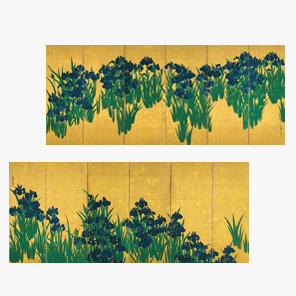


- Irises By Ogata Kōrin
-
Japan Edo period, 18th century
Nezu Museum -
Clumps of irises are boldly and yet rhythmically depicted on the large gold ground. The lavish use of azurite blue and malachite green pigments intensifies the aura of these screen paintings. Ogata Kōrin (1658–1716) achieved his first artistic pinnacle in his forties with Irises.
On Exhibit: Dec.1st-13th
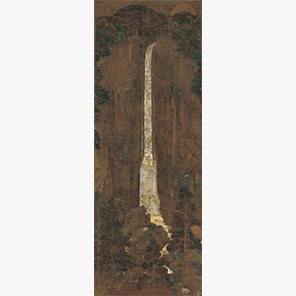


- Nachi Waterfall
-
Japan Kamakura period, 13th-14th centuries
Nezu Museum - Currently, this is the only known painting featuring this waterfall as the embodiment of the deity of Nachi Shrine in Kumano, Wakayama Prefecture. The power and beauty of the falls cascading straight downward exemplify the awe and devotion held by the Japanese people toward nature. It is a masterpiece considered to represent the pinnacle of sacred imagery created in Japan.
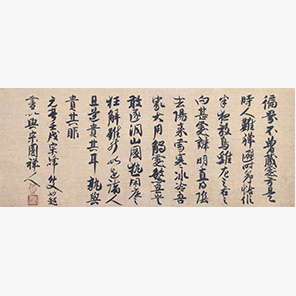


- Religious Words By Shūhō Myōchō
-
Japan Kamakura period, dated 1322
Nezu Museum - Shūhō Myōchō (known as Daitō Kokushi, 1282-1338) presented this text to Sōen Dōjin during rituals conducted on the day before the Winter Solstice Eve Ceremony in 1322. This text is written in Myōchō’s powerful brush style, a richly individualistic blend of both Chinese and Japanese techniques. This work is particularly revered as an early extant calligraphy by Myōchō.
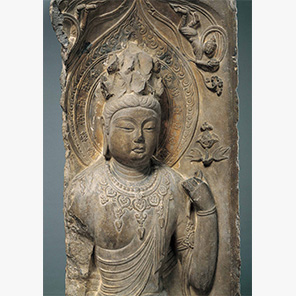


- Eleven-headed Guanyin (Ekādaśamukha)
-
China Tang dynasty, 8th century
Nezu Museum - This image is one of a group of relief-carved stone Buddhist plinths from Huatasi temple, Xian (also known as Baoqingsi). The symmetrically arranged body and the flowing drapery lines are particularly beautiful, making this an important fundamental piece in the study of Chinese early Tang period Buddhist sculpture.
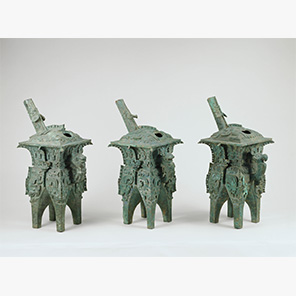


- Three Square He with Taotie Design
-
China Shang dynasty, 13th-12th centuries BC
Nezu Museum - This ritual bronze vessels created during China's Shang dynasty are extremely rare example of a set made up of three pieces. They are said to have been excavated from the burial sites of the Shang-period kings.
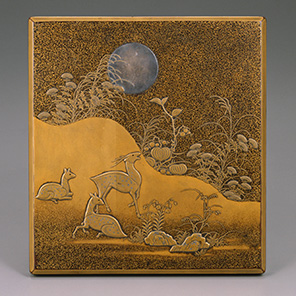


- Writing Box, known as Kasugayama
-
Japan Muromachi period, 15th century
Nezu Museum - This writing box is said to have treasured by Ashikaga Yoshimasa. Deciphering the glyphs scattered on the inside and outside of the lid and the scene of an autumn field and deer and a human figure stretching out in a thatched hut leads to a poem by Mibu no Tadamine in the Kokinwaka-shū poetry anthology. This work is as rich in technique as it is in intellectual playfulness.
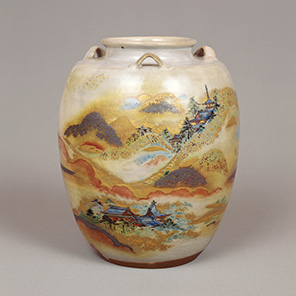


- Tea Leaf Jar with Temple in Mountain Design By Nonomura Ninsei
-
Japan Edo period, 17th century
Nezu Museum - This tea jar is decorated with a spring scene of cherry trees in full bloom, mountains, and temples all worked in overglaze enamel highlighted with gold and silver pigment. The base is impressed with a large "Ninsei" seal.










